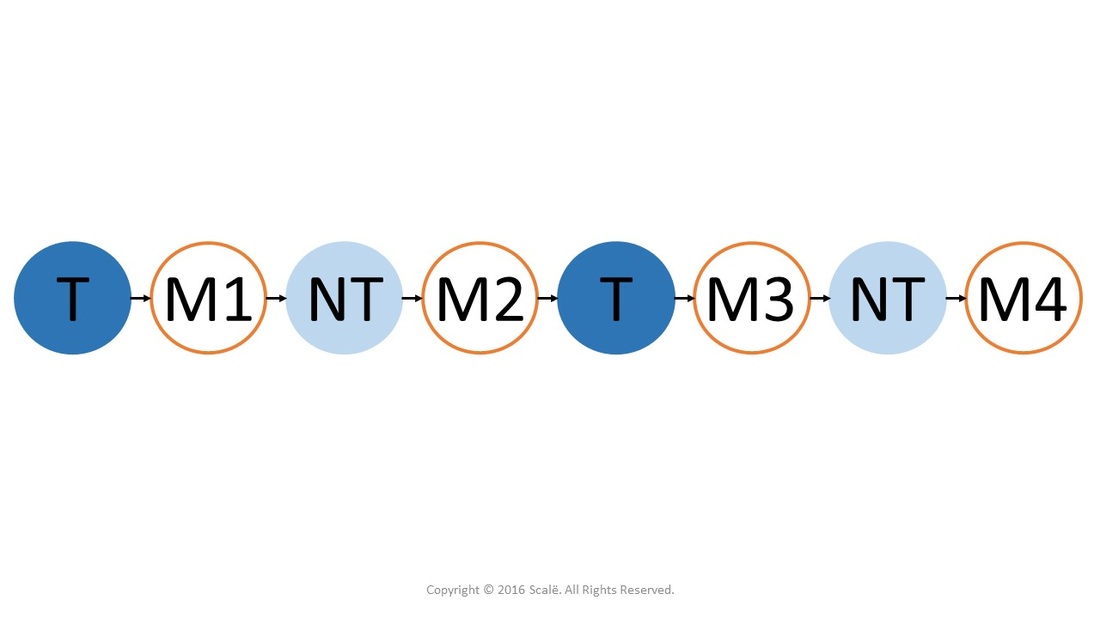Equivalent Time Sample Design
Equivalent time sample designs use wash-out periods to establish longitudinal effects
The equivalent time sample design is a quasi-experimental method where the intervention is administered several times and the intervention is taken away several times. Observations of the outcome are taken after each administration of the treatment and after each time period where the intervention is taken away.
The time period in between administration of the treatment and taking away the treatment is called a "washout" period. The effects of the treatment or non-treatment are allowed to dissipate before switching.
Equivalent time sample designs are powerful designs because each participant serves as their own control. Further, the stability of the treatment effect can be monitored across treatment administrations, washout periods, and non-treatment periods. Longitudinal effects can also be studied across the multiple observations.
The time period in between administration of the treatment and taking away the treatment is called a "washout" period. The effects of the treatment or non-treatment are allowed to dissipate before switching.
Equivalent time sample designs are powerful designs because each participant serves as their own control. Further, the stability of the treatment effect can be monitored across treatment administrations, washout periods, and non-treatment periods. Longitudinal effects can also be studied across the multiple observations.
T = Treatment, NT = No Treatment, M1 = Measurement 1, M2 = Measurement 2, M3 = Measurement 3, M4 = Measurement 4
Click on the Statistical Power button to continue.
Hire A Statistician
DO YOU NEED TO HIRE A STATISTICIAN?
Eric Heidel, Ph.D., PStat will provide you with statistical consultation services for your research project at $100/hour. Secure checkout is available with Stripe, Venmo, Zelle, or PayPal.
- Statistical Analysis on any kind of project
- Dissertation and Thesis Projects
- DNP Capstone Projects
- Clinical Trials
- Analysis of Survey Data

